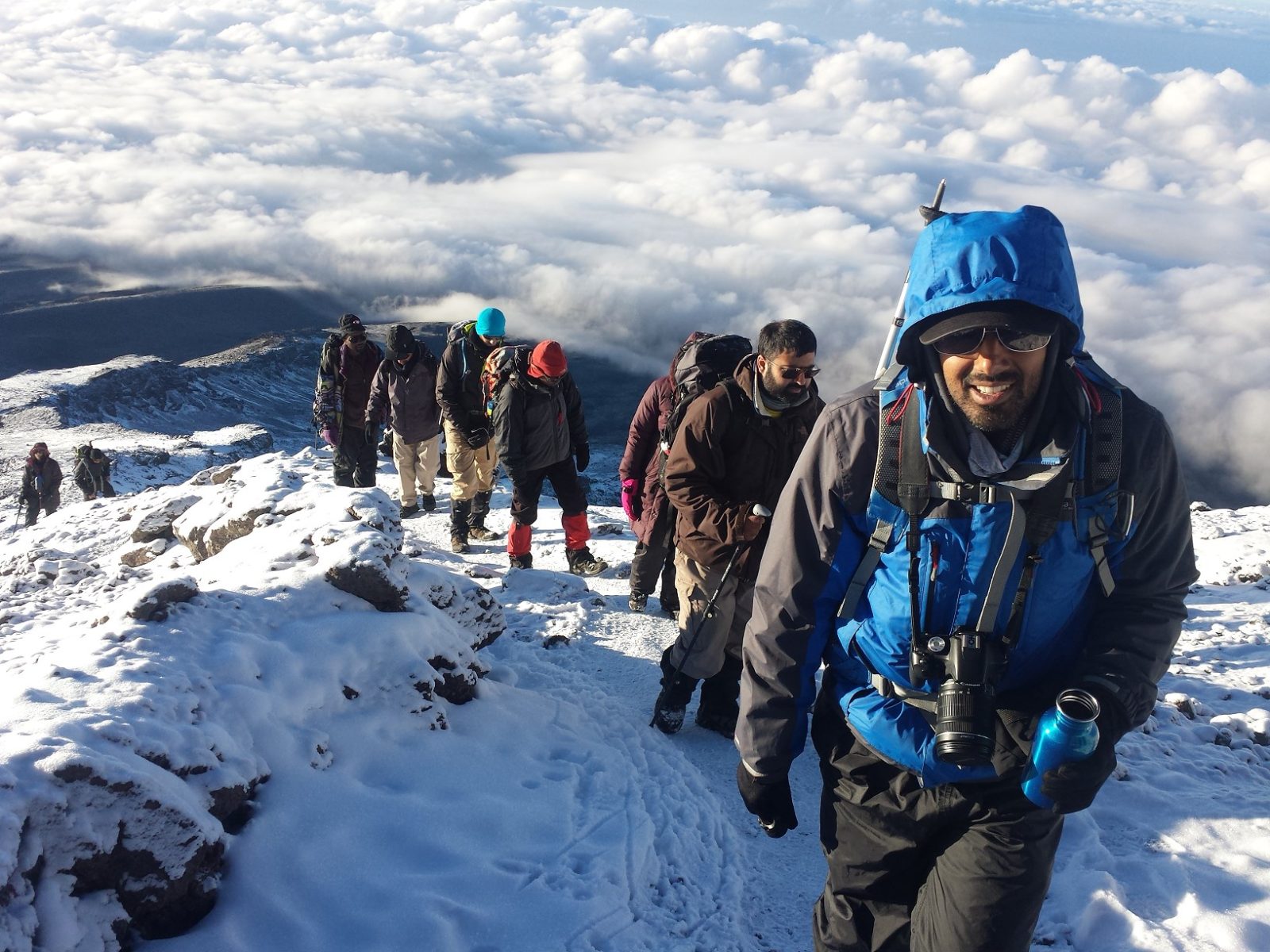
Safety on Kilimanjaro
We take your security very seriously at Adventure Alternative, Below is the emergency procedure on Mount Kilimanjaro in the event of an accident or the need for a descent.
EMERGENCY PROCEDURE ON KILIMANJARO
There is now a helicopter search and rescue service on Kilimanjaro operating out of Moshi, it is run by Kilimanjaro SAR. A helicopter is called by our guides who have completed a special training course to learn how to assess patients and call in an evacuation. The heli will only fly to around the height of the last camp Barafu, 4600 metres. It cannot land on the summit, so an injured person would still need to be carried down to the lower level before being taken off. Also the helicopter will only fly if the correct weather conditions allow it, and it will not fly at night.
You will need to provide Castro with your insurance details on arrival so that he can provide a manifest for the helicopter company. Once an evacuation is made then Kilimanjaro SAR will contact your insurance company to make payment. Make sure that your policy covers you up to 6000m for a helicopter evacuation. Kilimanjaro SAR also has a medical clinic where people can be taken for assessment and treatment, so your insurance policy should also cover for medical treatment after the evacuation.
The helicopter company also operates a flight for people who are not sick but who wish to descend the mountain early, this is called a leisure flight and it costs around USD$2500.00. You can arrange this in advance directly with the company and make your payment with them,
In the event of a rescue or an emergency which does not need a helicopter, the guides will contact local manager Castro Capelo in Moshi by mobile phone and also the nearest Ranger station. All three parties will then co-ordinate a rescue involving an assisted descent down the nearest path with porters, or a vehicle brought up to the Shira plateau. On Kilimanjaro, there is also a specially designed stretcher which has a bicycle wheel attached to the bottom to assist with a steady and quick descent.
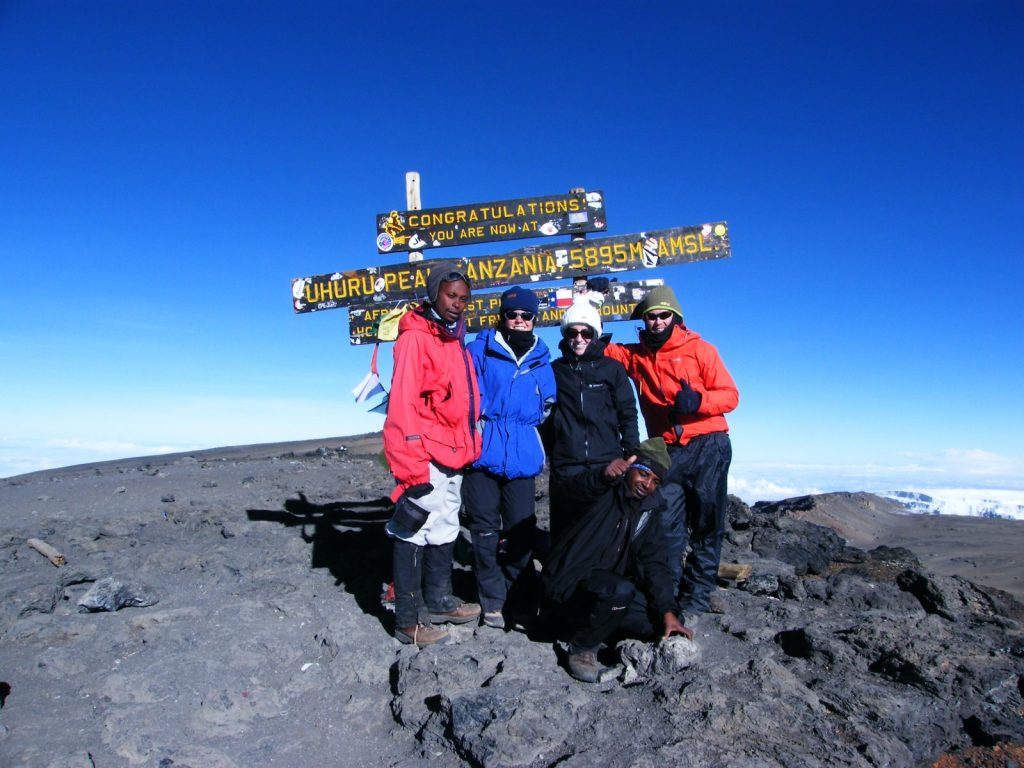
Castro will then meet the injured party at the park gate and arrange immediate transport depending on the person’s injury/condition to either the hotel or the hospital. Castro will also call the UK office and together we will ensure that the next of kin is notified and ensure that the insurance company is contacted as soon as possible so that a case number can be applied and the situation monitored by the Emergency Assistance Team.
Rescue vehicles and Ranger assistance on Mount Kilimanjaro are covered in the park rescue fee which we pay on your behalf. Our vehicles are on hand for any assistance, and hospital bills can be paid in cash or with a credit card.
We carry a fully stocked mountain first aid kit on every trip up the mountain, plus a small oxygen bottle with regulator and mask, though it is useful if you bring your own selection of commonly used items like headache tablets. Inside the first aid kit is a comprehensive booklet on how to deal with most situations.
Our mountain staff have all completed internationally recognised first aid certification courses and have also undergone additional training specifically in high altitude medicine from a UK based medical trainer.
KNOWING WHEN TO GO DOWN AND RELYING ON THE GUIDES
Some people may not acclimatise well to altitude and it is simply not worth continuing if it is likely to be injurious to your health. “The mountain is always there” may be a cliché, but it is true. The guides will assist you all the time and will ask if you wish to carry on. If you are clearly sick and unable to make your own judgement then they will take you down and you will be in good hands.
If you are not sure if you can continue because you are not feeling great, then please note that the Tanzanian guides find it difficult to ‘tell’ you to go down, unless the situation becomes very apparent. It goes against their culture to give a direct imperative to others (especially Westerners) and this may appear to be a lack of leadership because guides are employed to ‘make the call’ when necessary.
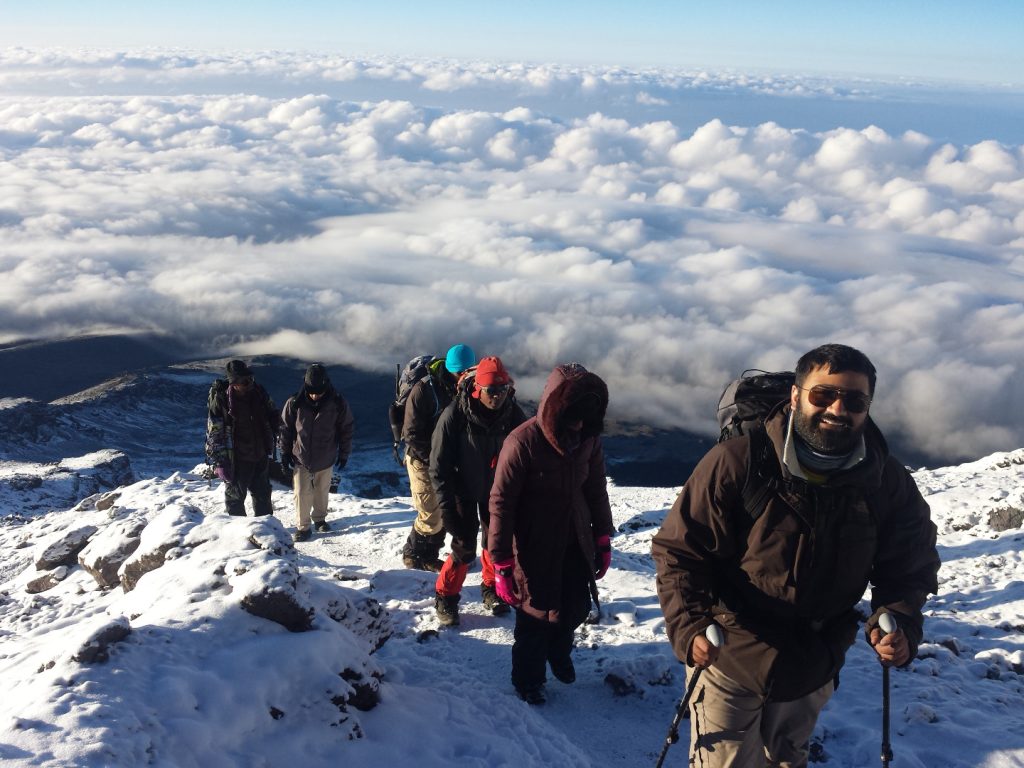
The guides themselves have climbed the mountain so many times that they are adept at recognising the point at which somebody is clearly not going to summit. But they find it hard to answer the direct question “Do you think I can get to the top?”. Politeness dictates that they must answer “yes” so try to couch your question in a less confrontational (yes or no) format. It seems strange to us but East Africans rarely speak to each other in this way and they find our Western directness a little alarming.
Over the years, however, we have trained our top guides to be less afraid of telling people if the summit is clearly beyond someone’s ability. Kamanda and Lipman, in particular, are company representatives who speak good English.
Our personal advice is to listen to your body. If it gets too hard and you are obviously very slow and finding it hard going, and perhaps getting frightened, then don’t risk your health and turn the trip into an awful memory. Better to go down and accept it gracefully. Some very obvious symptoms like laboured continual breathing even after resting, complete loss of appetite or headaches, continual loss of sleep, feeling faint or drunk, or just feeling very ill are all clear signs that you are not acclimatising well. Unless proved otherwise, you should always assume that the hypoxia caused by less oxygen at altitude is having an impact on your body and is therefore a cause of your symptoms.
Conversely, do not be tempted to go faster than is planned for you, just because you are feeling fine. The guides have been advised not to accede to any request to reduce the number of days of the trip, so please do not try to persuade them to do this. Additionally, do not ask them to go all the way down to the gate from the summit in one day, this is highly unfair on the porters and it would affect the staff logistics. The number of days on the Machame route for Kilimanjaro does for allow for ample acclimatisation, and we would advise that you take it slowly and give yourself the best chance of adapting to the new environment.
We have plenty of information discussing health at altitude, and acclimatising safely, which we hope will help take away the worry and mystery of altitude sickness and give you some confidence in managing your body safely on this expedition.
Book Your Adventure of a Lifetime Now
Discover our trips to other Countries
Adventure Alternative Articles
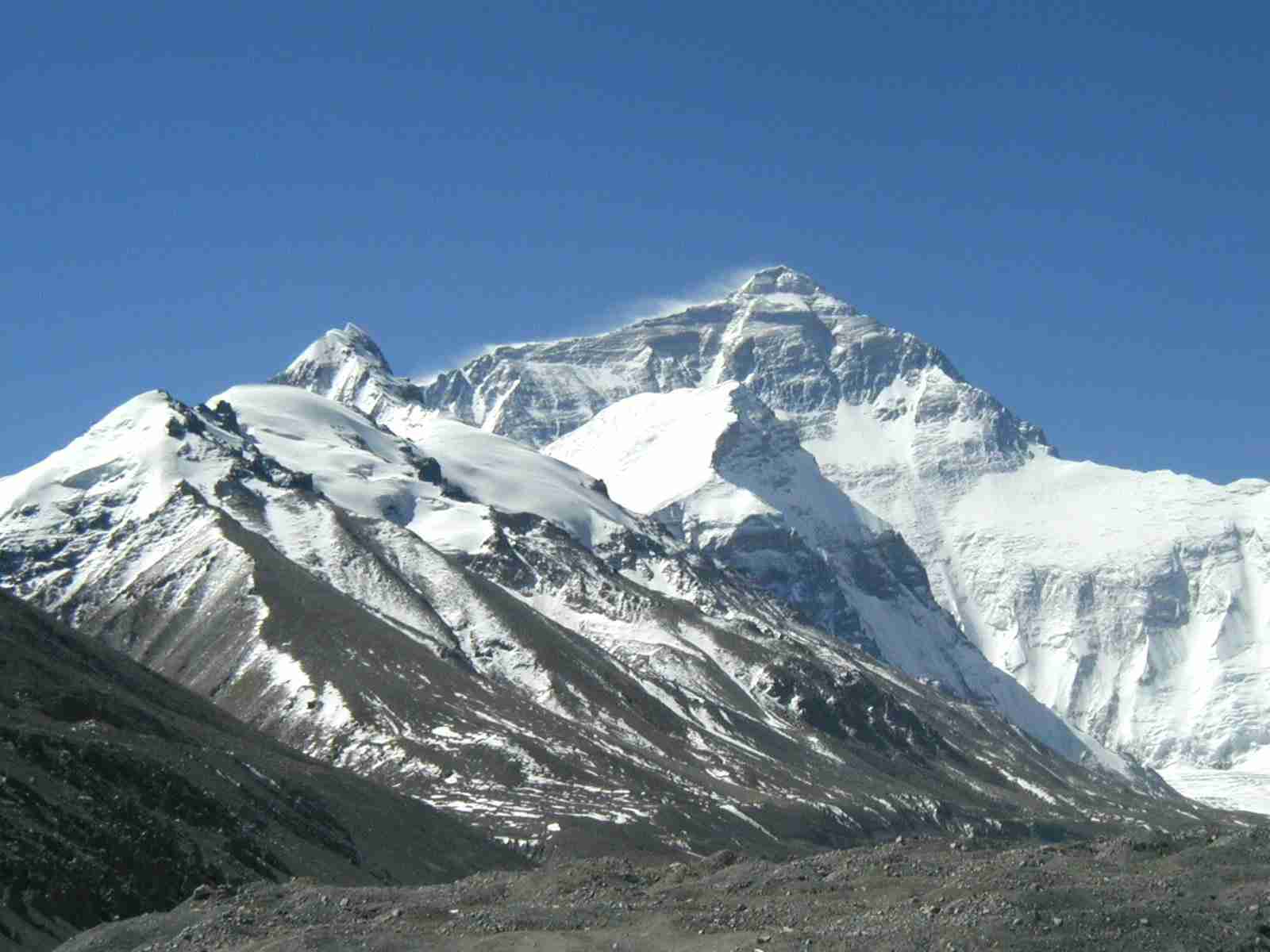
12 MONTHS, 12 MOUNTAINS
Climbing Calendar Ready for World Mountain Day In celebration of World Mountain Day, we've created a calendar for the year to make it easy for...
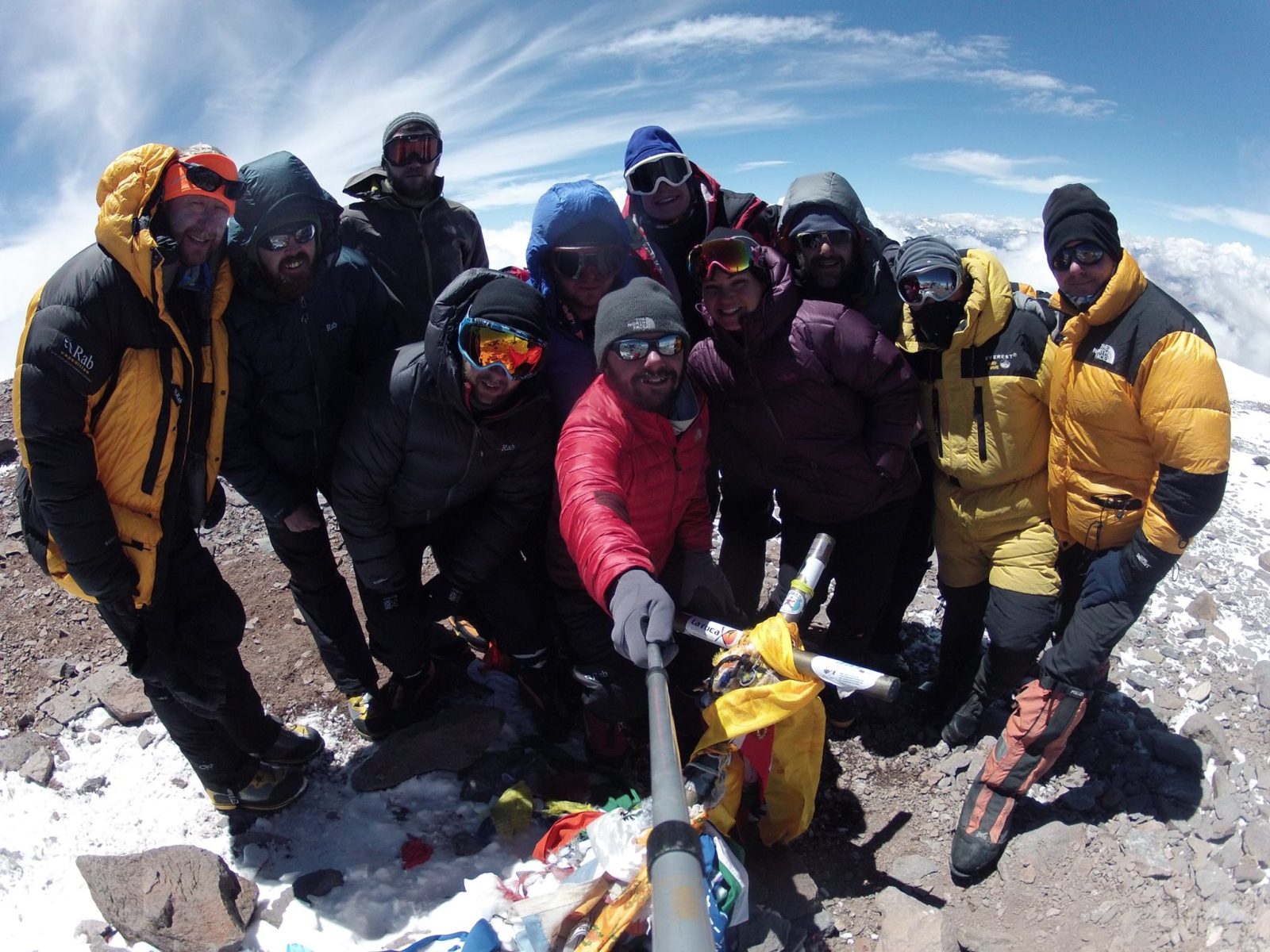
Mount Aconcagua Trip Review
January 2016 This year we had a team of twelve clients from four different countries – Iran, Ireland, England, South Africa and Argentina –...
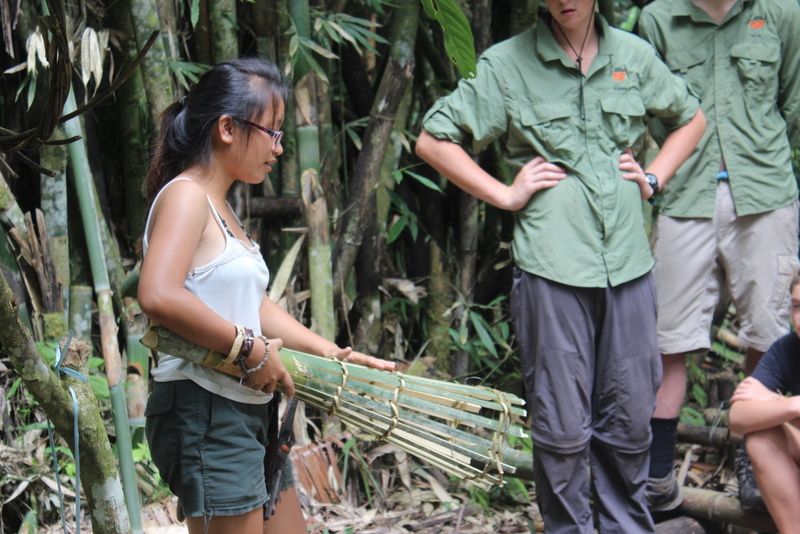
Alcey’s Survival Skills Course at Lupa Masa Jungle Camp
SURVIVAL SKILLS COURSE AT LUPA MASA JUNGLE CAMP | ADVENTURE ALTERNATIVE In celebration of International Rural Women’s Day, we’re talking...